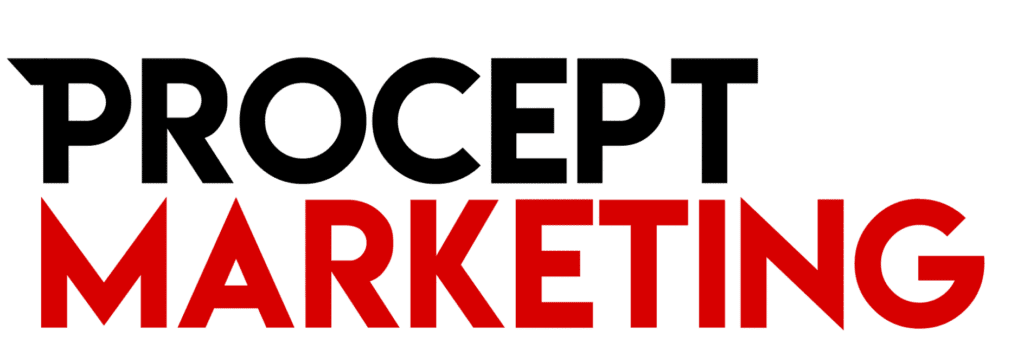Each day, people scour YouTube videos to gain insight on new ways to garner attention and clients for their business. Unfortunately, marketing actions that seem amazing might not be as miraculous as they appear on the surface. This article will help you distinguish between marketing scams and hacks that provide value for money spent or time invested.
Here are some marketing hacks the pros use compared with marketing scams you’ll want to stay away from.
1) Scam: Pop Up Windows
For years, entities have utilized throwing pop up windows over websites you visit. They do this so you’ll click on it or subscribe to their newsletter by accident. Pop-ups can be ads, notices, offers, or alerts that open on your computer. Some pop-ups are third-party ads that use phishing tactics—like warnings or prizes. They do this to trick you into believing they’re from a trusted company, so you’ll share personal or financial information. They might also claim to offer free downloads, software updates, or plugins, to trick you into installing unwanted software.
Luckily, web browsers like Safari & Google Chrome offer enhanced pop-up blockers to keep rogue adware activity to a minimum. This method is typically predatory at best and won’t be beneficial for conversions for the majority of businesses.
2) Hack: Opt-ins
Opt-ins are the less aggressive, more friendly cousin of pop-ups. Opt-ins appear on websites after a few seconds, either drawing your attention to something in particular. Things like a new collection, offering you a discount, or asking you to subscribe to their mailing list.
For e-commerce businesses, it’s a great idea to offer the customer something like 10% off for subscribing to their mailer. If you aren’t e-commerce, it’s ok to simply ask your viewer to subscribe to get updates & exclusive updates.
3) Scam: Buying Likes, Followers, Comments & Views
Purchasing likes is the marketing equivalent of buying a lottery ticket—your chances of winning are slim to none. If you think sensically, buying likes represent that you do not have faith in your business idea or content, and you do not think it would genuinely attract people.
Even when you do buy marketing services like this, it is unlikely that they’ll be seen by anyone in any regard. People purchasing marketing hacks like these are easily recognized and typically end up with no added value for their time or money spent.
4) Hack: Guerrilla Marketing
Guerilla marketing is an extremely popular marketing tactic used by marketers all over the world to get customers talking about their business when they can’t afford advertising space on billboards, radio, TV commercials, print media & even social media ads. The word “guerrilla,” in its written form, seems very intense. It conjures images of rebellion and conflict. Put it next to the word “marketing,” and it makes a lot of people ask, “Huh?”
But guerrilla marketing isn’t some sort of combative form of communication. In fact, it’s actually a very unconventional form of marketing in that it raises brand awareness among large audiences without interrupting them. What marketers really enjoy about guerrilla marketing is its fairly low-cost nature. The real investment here is a creative, intellectual one.
As niche as it might seem, there are actually a few sub-categories of guerrilla marketing:
- Outdoor Guerrilla Marketing. Adds something to preexisting urban environments, like putting something removable onto a statue, or putting temporary artwork on sidewalks and streets.
- Indoor Guerilla Marketing. Similar to outdoor guerrilla marketing, only it takes place in indoor locations like train stations, shops, and university campus buildings.
- Event Ambush Guerilla Marketing. Leveraging the audience of an in-progress event — like a concert or a sporting game — to promote a product or service in a noticeable way, usually without permission from the event sponsors.
- Experiential Guerilla Marketing. All of the above, but executed in a way that requires the public to interact with the brand.
(Hubspot https://blog.hubspot.com/marketing/guerilla-marketing-examples)
5) Scam: Boost Posts = Advertising
Social media management is challenging; it might seem easy on the eye. But mostly, it’s all about planning content, promoting it, and analyzing critical KPIs. Every post that gets published goes into the report, and at the end of the day, you have to generate revenue from social media, or else there is no reason to continue.
For the sake of generating good ROI and showing better numbers on Facebook and Instagram reports, we have seen agencies simply boosting posts without any proper plan and trust us, when you enable boosting on multiple posts with no particular goal in mind, you are losing money.
You must realize that a quick boost in reach does not necessarily translate into more revenues and better ROI, especially even more so in the case of a retail or e-commerce business.
Furthermore, boosting every post is not even recommended. You must know that most of the additional users who might see your post may not be your target audience, and hence they are unlikely to respond to your content.
When you “boost” your posts, you are not advertising, you are simply throwing flyers from a helicopter, and most of them end up on the road (or) in the trash!
In reality, boosting social posts does help a brand but boosting every other post on Facebook (or) Instagram doesn’t make sense. (Mad Tomatoes)
6) Hack: Email Lists
An email list is simply a list of emails that businesses have gathered from visitors/customers that would like to receive information, updates, discounts, and other details about your business in a digital format that is sent to their email inbox.
The numbers for email marketing look good: you are 6x more likely to get higher click-thru rates on an email than on a tweet. Also, email is 40 times more effective at acquiring new customers than Facebook or Twitter.
(https://www.campaignmonitor.com/blog/email-marketing/importance-building-email-list/)
Email marketing helps you not only to build a relationship with your customers, but gives you a proven way to nurture leads and convert them into long lasting customers. No matter what type of business you operate, an email list is the most important element of a successful marketing strategy.
7)Scam: following or inboxing random people on social media
Have you ever maxed out the daily follow button on a social platform? I won’t do it ever again on any platform, this may be one of the most toxic tactics out there.
While following a max number of people a day has the potential to boost your follower count in terms of numbers, it usually reduces your reach in the long run. Most followers notice when something is not right on your profile, and it also triggers a massive red flag with the platforms.
Social platforms are designed to bury content with a low-follower-to-engagement ratio. Facebook is known for such practice. I assume most social media and writing platforms follow in the same footsteps. Think about it. Nobody wants boring content.
What you should do instead of following everyone in your geographical area is find 10 individuals within your target demographics and leave a thoughtful comment under one of their posts.
8) Hack: Review marketing
Happy customers are one of the most effective marketing tools you can get. Their feedback doesn’t just help you adjust your sales or customer service strategy. It can also strengthen brand loyalty, convert more prospects, and power up your SEO efforts. Reviews can be used to raise your business’s value, foster trust in your potential customer, & increase your brand’s authority.
Data shows that 89% of consumers don’t take action until they read reviews. Working to best present reviews to your target audience can help you achieve noticeable results without a high marketing cost.
9) Scam: Cheap Websites
These days, every business needs a website. If you don’t have a website, that should be one of your top priorities to gain traction with your business. However, don’t trust low website-building prices.
A website is an investment, especially if you want a custom made one. If someone offers to create a website for you and the price is unbelievable, you’ll get what you pay for. The website will likely be poorly designed and may even be a duplicate of another website. If that’s the case, you may get blacklisted by Google for unoriginal content.
Another option is available through large media companies who offer free or low-cost websites in exchange for other contracted services. The problem with that is that when you decide to stop working with that company, you can’t take your website with you and will end up responsible for forking out the cash when you didn’t plan to
Using marketing hacks can have a big impact on marketing campaigns, but it also has the potential to hurt relationships with consumers if done incorrectly.


